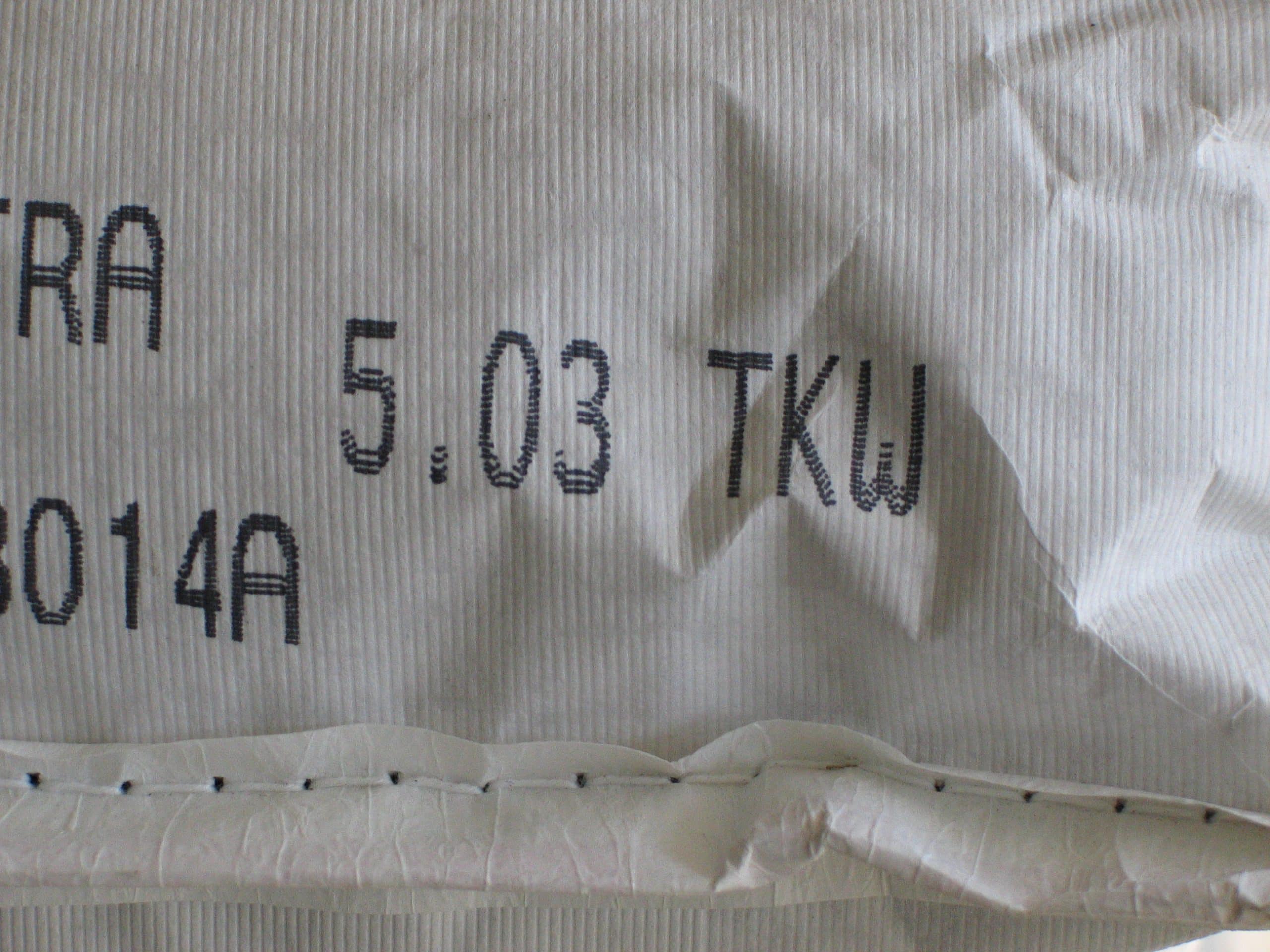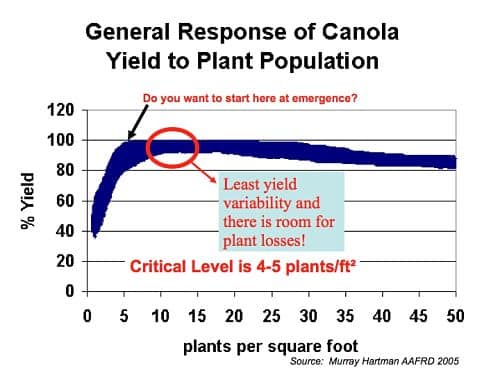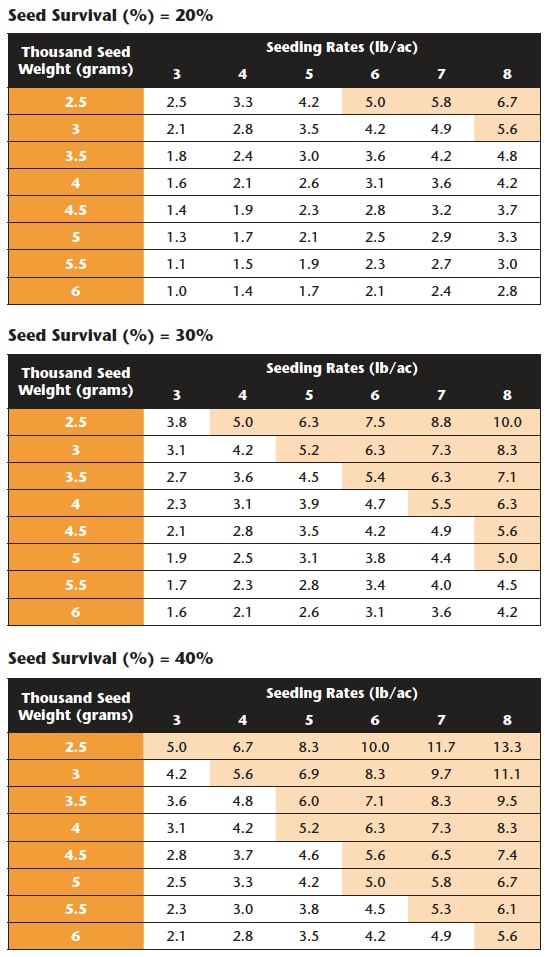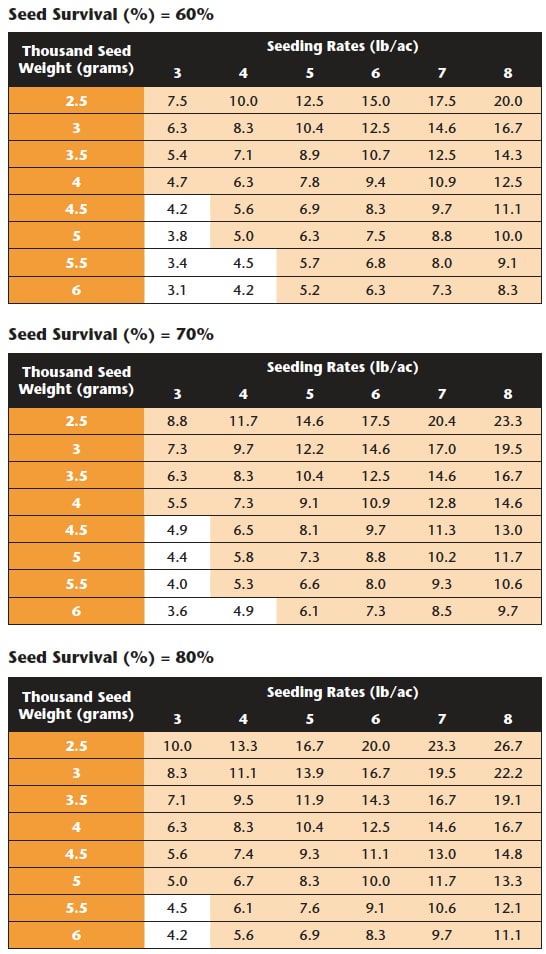
UPDATE: Scroll to the bottom for tables to see your likely canola stand based on seed weight, seeding rate and estimated seed survival.
Thousand kernel weight (TKW) for canola seed can vary from less than 3 grams to more than 6 grams. This year there have been reports of wide ranges in seed size, even among seed lots of the SAME variety. Look at the TKW for each seed lot, and calibrate the drill to achieve your target plant population for each seed lot. Click here for more on drill calibration.
Seed each seed lot separately. Mark the field where you change lots. Keep a sample of each lot.
If you plan to seed at 5 pounds per acre regardless of seed size, know the risks. Large-size seed planted at 5 pounds per acre may not achieve the safe minimum plant stand of 7 plants per square foot.
Here’s why:
A 6-gram hybrid seeded at 5 lb./ac. works out to 8.7 seeds per square foot. At 60% seedling survival, which is at the high end for average conditions, those 8.7 seeds only produce 5.2 plants per square foot. (See the tables at the bottom of this article.) At rates below 5 lb./ac., the plant stand drops accordingly. The combination of lower seeding rates and larger seed size can lead to disappointing plant populations and a significant drop in yield potential.

In this situation, growers will need to take extra precaution to increase seedling survival. Such as:
Seed into warm soils. This will increase seed survivability, especially if you have a heavy seed lot which will result in fewer seeds per pound going into the ground.
Seed 1/2” to 1” deep. Shallow seeding is recommended for all canola because it increases seedling survival.
Keep seed-placed fertilizer at a safe level.
Bulking agents: Most drill tanks sold in western Canada are made to handle small seeds such as canola and deliver relatively uniform seed counts to each row. For a drill that cannot accurately meter small seeds and low flow rates, bulking agents such as elemental sulphur, seed-sized starter fertilizer prills, or cracked oat groats, may help.
However, the Canola Council of Canada ran trials in 2001 and 2002 to evaluate pelletized elemental sulphur at 22.5 kg/ha (20 lb./ac.) as a seed-bulking agent. This research found no consistent stand establishment or yield benefit when using the bulking agent, since the treatments without bulking agent generally produced more than adequate plant populations. Bulking agents are likely not necessary unless your drill is quite ineffective at delivering low rates of small seed. If using a bulking agent, ensure seed and bulking agent stay uniformly mixed throughout the seeding operation.
Handy tables
The following charts show the three-way relationship between seeding rate, seed size and estimated seed survival. For example, if you hope to get 60% seed survival, go to the chart with 60% at the top. If your seed size is 5 grams per 1,000 kernels and you want to seed at 5 lb./ac., you can expect 6.3 plants per square foot. The ideal plant stand for yield potential and uniform growth, with some cushion for plant loss to insects and disease, is 7 to 14 plants per square foot. The minimum before you face a higher risk of yield loss is 5 plants per square foot. All cells in white below are in this high risk zone.



